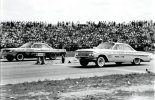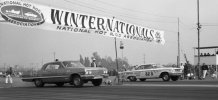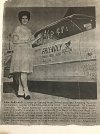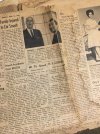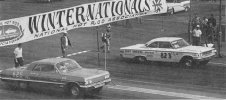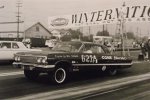George Klass
Well Known Member
"There were somewhere between 18-21 Impala 409/409 cars built right at the end of the 62 production built with aluminum fenders, inner fender liners and hood."
I have heard this before, and it brings up an interesting question. NHRA Stock classes were required to run vehicles that were factory production line assembled. I would assume that the majority of Chevy S/S (or SS/S) drag cars in 1962 were using the 409/409 engine combination, as that is the way the cars were built prior to the Summer Nationals. And then, 18 '62 Chevys were factory produced with the 409 blocks and the new intake manifolds, and the new cylinder heads (the Z-11 heads) along with the aluminum front ends. Did these cars race in the NHRA Stock class? And if they did, what was the class designation, as they would have a huge advantage over the 409/409 combinations? Or, were they required to run the cars in the FX class instead of the Stock class?
I have heard this before, and it brings up an interesting question. NHRA Stock classes were required to run vehicles that were factory production line assembled. I would assume that the majority of Chevy S/S (or SS/S) drag cars in 1962 were using the 409/409 engine combination, as that is the way the cars were built prior to the Summer Nationals. And then, 18 '62 Chevys were factory produced with the 409 blocks and the new intake manifolds, and the new cylinder heads (the Z-11 heads) along with the aluminum front ends. Did these cars race in the NHRA Stock class? And if they did, what was the class designation, as they would have a huge advantage over the 409/409 combinations? Or, were they required to run the cars in the FX class instead of the Stock class?
Last edited:

